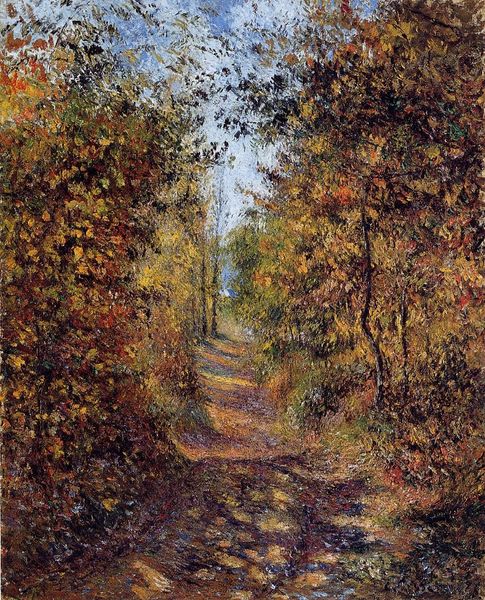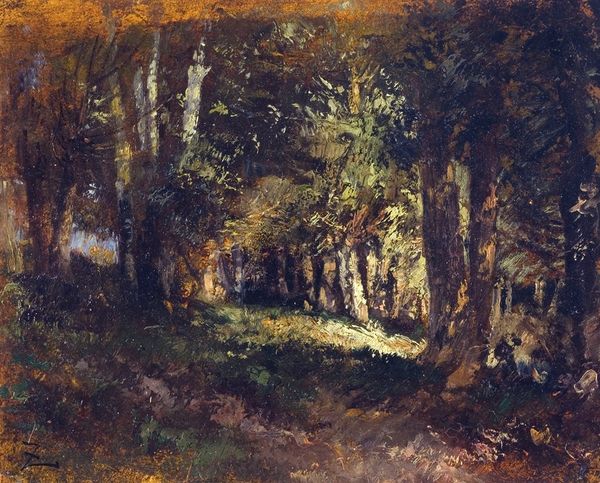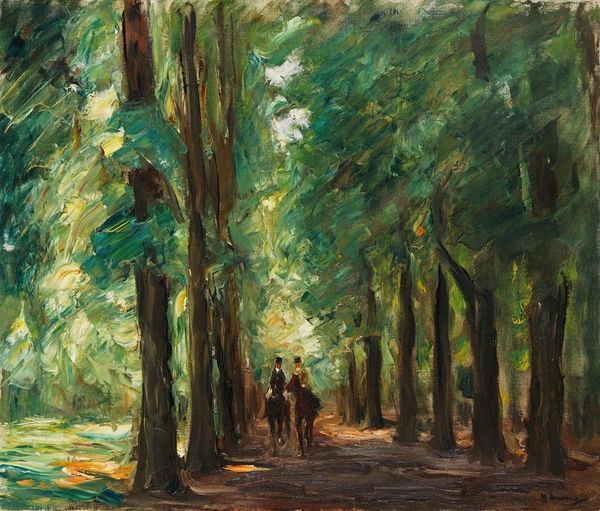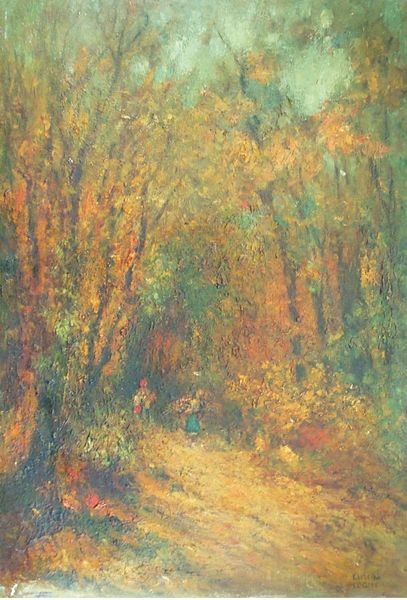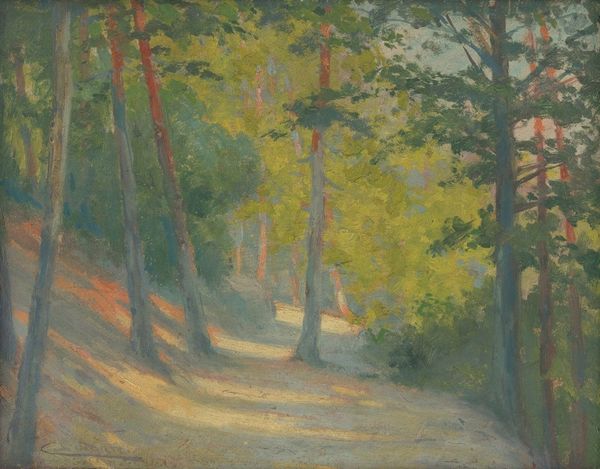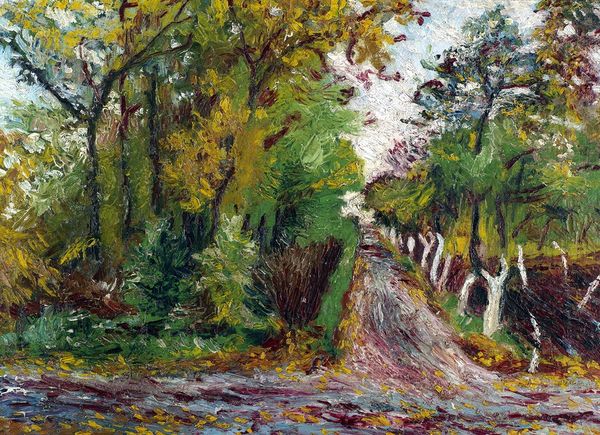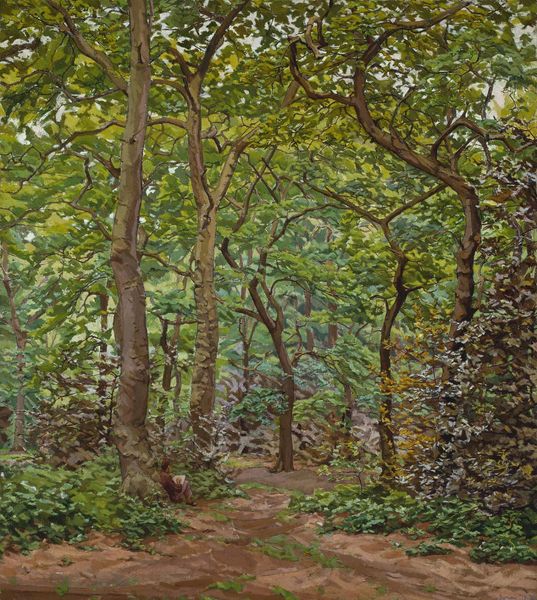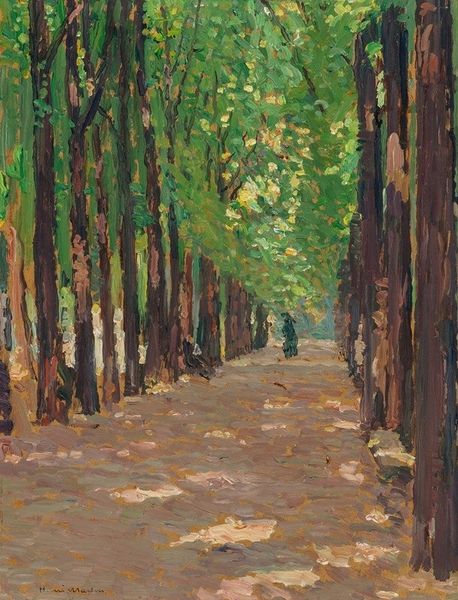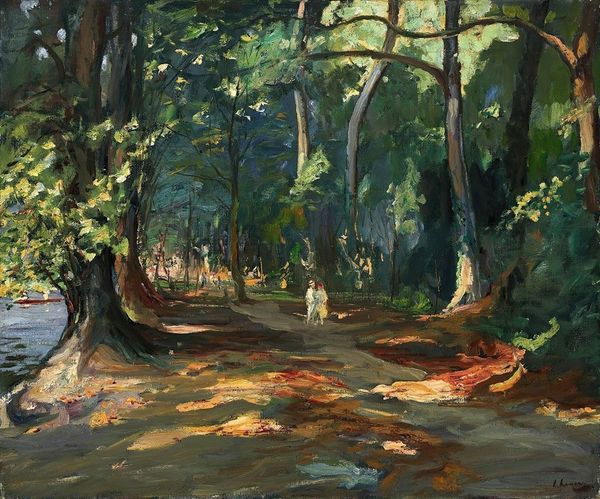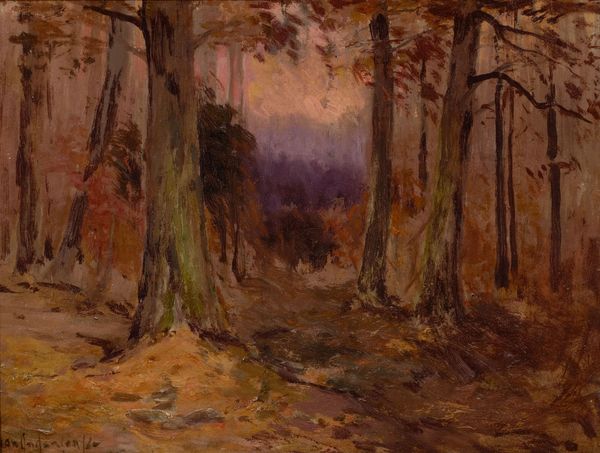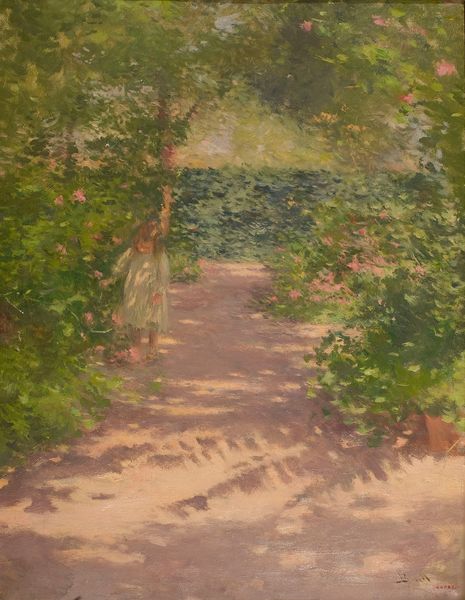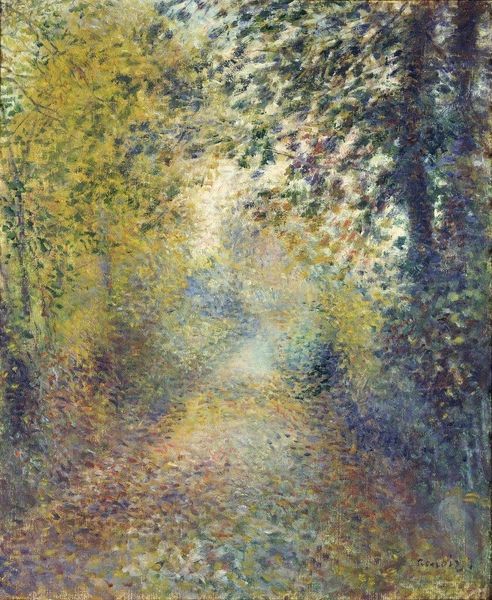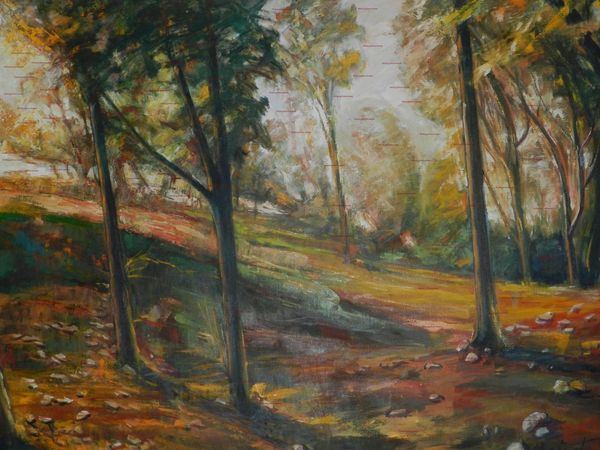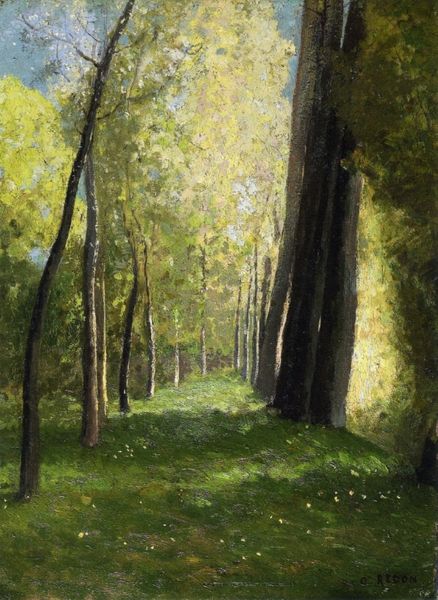
Copyright: Public Domain: Artvee
Editor: This is Alice Pike Barney’s “Allee dans le Parc,” painted around 1906 using oil. The dark pathway leading into the light has a rather calming effect, but the person standing there seems isolated. How do you interpret this work? Curator: I see a compelling visual metaphor for the social constraints placed on women artists of the era. Barney, an American expatriate, moved to Paris during a time of immense cultural change and burgeoning feminist movements. Editor: That’s fascinating! Curator: Doesn’t the composition itself – the long, shadowed path hemmed in by those looming trees – feel suggestive of the limited avenues available for women seeking recognition in artistic fields? And notice the lone figure bathed in light at the end of the alley. Who might that be? And what might that represent? Editor: I’d guess that the person standing at the end of the path might represent freedom or an escape. Curator: Precisely. That figure might be an allusion to a kind of hard-won self-discovery – the possibility of individuality gained through breaking societal expectations. Barney, coming from a wealthy background, was in a unique position to challenge norms through her artistic endeavors. Editor: So, “Allee dans le Parc” isn’t just a pretty landscape. It is making a statement about women in society! Curator: Indeed! The very act of painting *en plein air* was itself a statement. Artists, especially women, at the time were staking their claim on the public space, pushing against traditionally prescribed roles. Barney's painting is part of this broader struggle for visibility and voice. Editor: I see it so differently now! Thanks for showing me the deeper layers in Barney's work! Curator: My pleasure!
Comments
No comments
Be the first to comment and join the conversation on the ultimate creative platform.
